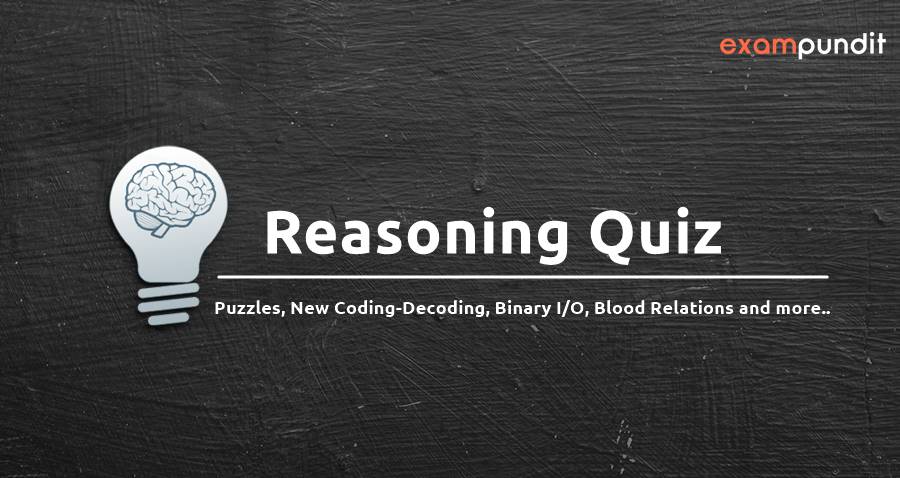Hello and welcome to exampundit. Here is a set of Reasoning Quiz for IBPS Clerk Prelims 2018 on Inequalities.
The following reasoning quiz has 11 questions from Inequalities with 10 minutes.
[WpProQuiz 218]
Reasoning Quiz – Inequalities – IBPS Clerk Prelims 2018 – 1
Directions (Qs.1-5): In the following questions, the symbols @, #, $, * and % are used as illustrated below:
‘P @ Q’ means ‘P is not smaller than Q’.
‘P # Q’ means ‘P is neither greater than nor equal to Q’.
‘P $ Q’ means ‘P is neither smaller than nor greater than Q’.
‘P * Q’ means ‘P is not greater than Q’.
‘P % Q’ means ‘P is neither smaller than nor equal to Q’.
Now, in each of the following questions assuming the given statements to be true, find which of the two conclusions I and II given below them is/are definitely true? Give answer
(a) if only Conclusion I is true.
(b) if only Conclusion II is true.
(c) if either Conclusion I or II is true.
(d) if neither Conclusion I nor II is true.
(e) if both Conclusions I and II are true.
- Statements:
M $ K, D * K, R # K
Conclusions:
(I) D $ M
(II) M % D
- Statements:
F * M, M % R, E @ F
Conclusions:
(I) M % E
(II) R @ E
- Statements:
H $ K, T # H, W * T
Conclusions:
(I) K % W
(II) T # K
- Statements:
N % A, A # L, F $ N
Conclusions:
(I) L % F
(II) F % A
- Statements:
B * D, D $ M, F % M
Conclusions:
(I) B # M
(II) F % B
Directions (Qs. 6-11): In the following questions the symbols +, ×, ?, @ and $ are used with the following meanings:
P + Q means P is neither smaller nor greater than Q.
P × Q’means P is neither equal to nor smaller than Q.
P ? Q means P is neither greater than nor equal to Q.
P @ Q means P is either greater than or equal to Q.
P $ Q means P is not equal to Q.
Now, in each of the following questions assuming the given statements to be true, find which of the two conclusions I and II given below them is/are definitely true. Give answer
(a) if only conclusion I is true;
(b) if only conclusion II is true;
(c) if either I or II is true:
(d) if neither I nor II is true; and
(e) if both I and II are true.
- Statement:
P $ Q, Q × R, P + R
Conclusions:
(I) Q × P
(II) P ? Q
- Statement:
A + B, B $ C, C ? A
Conclusions:
(I) C $ A
(II) B + C
- Statement:
Y @ Z, Z × Q, Q $ P
Conclusions:
(I) Y ? Q
(II) Y ? P
- Statement:
E × F, F @ L, L+ N
Conclusions:
(I) N + F
(II) E × L
- Statement:
H @ J. J ? K, K × M
Conclusions:
(I) H @ M
(II) M × J
- Statement:
M @ T, T + V, V ? E
Conclusions:
(I) V + M
(II) V ? M
Let us know in the comment section if you have liked our quiz. Your comments are extremely motivating for us. Also, do share the quizzes with your Friends and co-aspirants.
All the best.
Regards
Team Exampundit
This post was last modified on June 2, 2019 12:01 pm





